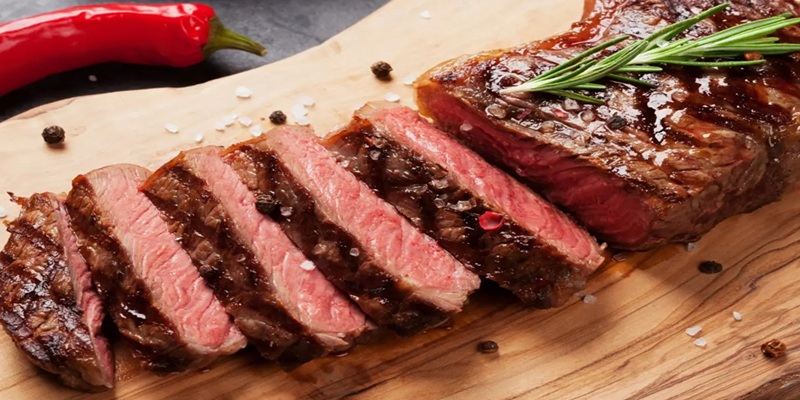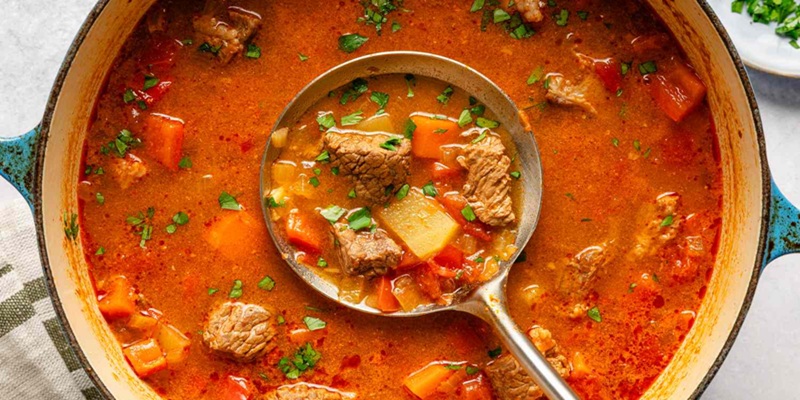What Are Red Meat Foods: A Complete Guide
Red meat, including beef, lamb, and pork, is a key protein and nutrient source in global diets. Despite misconceptions, its health impact varies by type and preparation. This article explores what are some types of red meats, what are red meat foods, their benefits, and how to make informed dietary choices.
Red meat, including beef, lamb, and pork, is a key protein and nutrient source in global diets. Despite misconceptions, its health impact varies by type and preparation. This article explores what are some types of red meats, what are red meat foods, their benefits, and how to make informed dietary choices.
Understanding Red Meat
Red meat, sourced from mammals like beef, lamb, pork, and goat, is rich in protein, iron, zinc, and B12, supporting overall health. While nutrient-dense, it contains higher saturated fats than poultry and fish, necessitating moderation. Balancing intake with lean proteins and choosing ethically sourced options promotes a healthier, sustainable diet.
Types Of Red Meat Foods
1.Beef
Beef is one of the most favoured types of red meat, offering an array of cuts suited to various culinary tastes. Popular cuts include tender steaks, like ribeye and filet mignon, which are known for their flavorful profiles. Roasts, such as chuck roast or brisket, lend themselves well to slow cooking, creating satisfying meals. Ground beef is another versatile form for crafting burgers, meatballs, and sauces. Each cut delivers unique textures and flavours, making beef an adaptable ingredient in diverse cuisines.

2.Lamb and Goat
While lamb and goat offer delicious options, they differ significantly in their flavours and cooking methods. Lamb, sourced from young sheep, is celebrated for its tenderness and flavour, with notable cuts including leg, shoulder, and rack. Dishes like lamb chops and shepherd's pie showcase its rich taste and versatility. In contrast, goat meat presents a leaner alternative with a more robust flavour profile, often utilized in stews and curries. Acknowledging the distinctions between these meats can enhance culinary experiences, as appropriate seasoning and cooking techniques are paramount to accentuating their unique tastes.
3.Pork
Pork is another widely consumed red meat, acclaimed for its variety and adaptability. Typical forms of pork include chops, perfect for grilling or frying, and bacon, a beloved breakfast item that adds a crispy texture to various dishes. Often cured or smoked, Ham serves as a delectable centrepiece at festive gatherings. Each type of pork calls for specific cooking methods—roasting, braising, and smoking are favoured practices that enrich flavours and tenderize textures. Interestingly, pork ranks among the most frequently consumed meats globally, cherished for its versatility across different culinary traditions.
Nutritional Profile Of Red Meat
Red meat occupies a prominent position in numerous diets worldwide, not only for its flavorful experience but also for its impressive nutritional profile. Here, we explore the key nutrients contained in red meat and their roles in a well-rounded diet.
Essential Nutrients In Red Meat
1. Protein: Red meat is an excellent source of high-quality protein, essential for muscle growth, repair, and overall bodily function. A typical serving provides approximately 25-30 grams of protein, making it an ideal choice for those requiring higher protein intake, like athletes.
2. Iron: A crucial component for forming red blood cells and ensuring efficient oxygen transport, iron in red meat is mainly heme iron, which is more efficiently absorbed by the body than non-heme iron found in plants. A 3-ounce serving of beef can supply around 2.7 mg of iron, addressing a significant part of the daily requirement.
3. Zinc: Vital for immune response, wound healing, and DNA synthesis, zinc is abundant in red meat. Typical servings may offer 5-9 mg of zinc, contributing substantially to daily recommendations.
4. B Vitamins: Red meat boasts a wealth of B vitamins, especially B12, necessary for nerve function and red blood cell formation. One serving can fulfil more than 100% of the daily B12 requirement while providing other B vitamins such as B6, niacin, and riboflavin, all critical for energy metabolism.
Fat Content
When evaluating the fat content of red meat, it's vital to differentiate between saturated and unsaturated fats:
Saturated Fats: These fats are generally found in greater concentrations in fatty cuts of red meat and should be consumed sparingly as excessive intake is associated with heart disease.
Unsaturated Fats: Found in lean cuts of red meat, these healthier fats can positively influence heart health when consumed in moderation.
Benefits Of Incorporating Red Meat
Incorporating red meat into a balanced diet can offer numerous advantages:
It provides essential nutrients advantageous for individuals at risk of deficiencies due to restrictive dietary practices.
Recent research indicates that moderate consumption of lean red meat correlates with improved muscle mass and strength, particularly in older adults, enhancing health and functionality.
As a versatile ingredient, it encourages diverse meal preparation, making food imaginative and enjoyable.
When consumed judiciously, red meat can be a valuable element of a balanced diet, contributing essential nutrients that promote health and wellbeing.
Health Implications Of Red Meat Consumption
Red meat consumption is linked to health risks, including higher LDL cholesterol, heart disease, and colorectal cancer, though risks vary by cooking methods and meat types. Experts recommend limiting intake to 1-2 servings per week and balancing it with fruits, vegetables, whole grains, and lean proteins to support overall health.
The Global Palette Of Red Meat
Red meat transcends being merely a protein source, a fundamental aspect of culinary traditions worldwide. Each culture expresses its reverence for red meat through distinctive flavours and methods of preparation. For example, the smoky charm of American barbecue features marinated cuts of beef, ribs, and brisket, slow-cooked or grilled over hickory or mesquite. Chef Aaron Franklin, a renowned barbecue expert from Austin, Texas, emphasizes that "the secret lies in slow cooking—allowing the meat to absorb the incredible smoke flavours."

In various European regions, stews reign supreme. The hearty Hungarian goulash, which comprises tender beef delicately seasoned with paprika, epitomizes how red meat can harmonize with local herbs and spices. Likewise, in Wales, lamb is celebrated and incorporated into traditional recipes like Cawl, a robust soup that merges meat with seasonal vegetables.
In Asian cuisines, red meat is showcased in various dishes, especially curries. Indian sweet lamb curry, like Rogan Josh, features lamb simmered with yoghurt and aromatic spices such as cardamom and cinnamon, reflecting the elaborate flavour nuances of the region's culinary landscape. Chef Manish Mehrotra declares, "Cooking meats in milk or yoghurt not only tenderizes them but adds depth—this embodies the essence of our foods."
In Latin America, asado is a cherished gastronomic event in which assorted cuts of beef are grilled over open flames, often served with chimichurri. This sauce enhances the regional taste profile with fresh herbs and garlic. Whether plated in a bowl, skewered, or char-grilled, the global manifestations of red meat illustrate not just flavours but cultural significance, beckoning us to savour each mouthful while honouring its origins.
Embracing Red Meat With Awareness
Red meat provides essential nutrients like protein, iron, and zinc, supporting overall health. While excessive consumption poses risks, moderate intake can be beneficial. Understanding its nutritional value allows individuals to enjoy red meat while maintaining a balanced diet. Making informed choices ensures both culinary enjoyment and personal well-being.